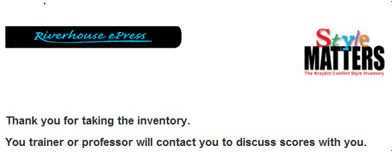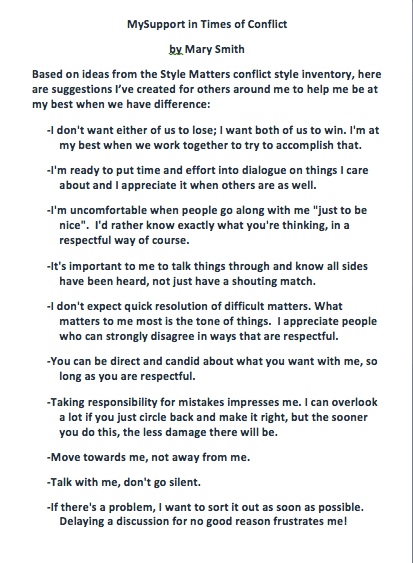Instructions for Dashboard
The dashboard itself is visible only to viewers with Consultant privileges.
WHAT YOU CAN DO WITH THE DASHBOARD
- Register users and monitor at a glance who has taken the inventory and who has not.
- Send registration info to users with any instructions you wish to give them, with a single click.
- Send notes to users, as individuals or a whole list, with a single click.
- Do Score Review Management, that is, manage the timing of when your users see their scores. Set configs so users do not see their report at time of taking the inventory; rather score reports are sent directly to you. <li
- Download a user’s Score Report with one click, so you can view, print, email it, or save it as a PDF file for easy access later. <li
- the Score Report directly to any user at a time of your choosing with a single click, without having to open it or type an email address.
View a Log
- of all events for each user, in case you forget whether or not you sent registration, etc.
- Export scores of all users into an Excel spreadsheet, where you can easily do aggregation and analysis.
- Keep track of number of users you have paid for and order new User Accounts.
TO ACCESS THE CONSULTANT DASHBOARD
Any user can see the Help page you are now reading. But to see and use the Dashboard, you must be logged in with a Consultant account configured for Dashboard use. (To buy a Dashboard account, go here ($30.45 setup, plus $6.95 per user).
After you buy the Dashboard, we need to configure your account accordingly, which may take up to a business day. We will email you when it is ready for use). To login, go to the login on the left side of the front page www.RiverhouseEpress.com. Use the same login and password you used when you purchased the Dashboard.
After you log in, a Dashboard menu will appear on the left. (This is visible only after you have purchased the Consultant Dashboard and we have configured your account accordingly.) Scroll down the page if you cannot see it.
TO SET UP USERS
You can begin registering users on the Dashboard after you have received a note from Riverhouse saying the Dashboard has been configured for you.
Make sure you have new user accounts available. To see how many user accounts are available to you, check the counter on the top right of the Dashboard. To buy more, click on the button "Add User Accounts", found on the left menu. This brings up a screen showing how many unused User Accounts are still available and a button to easily order additional accounts.
To register users. Click on “Create User” to bring up a registration form. You must enter all of the following:
- Name. Whatever you enter here will appear at the top of that user’s Score Report. Eg: if you enter “John Doe”, at top of the Score Report it will say “Report for John Doe”. Spaces between words are okay.
- Password, entered twice.
- Email. Our server imposes two rules regarding emails. One, whatever you enter in this field must be in standard email format, that is, This email address is being protected from spambots. You need JavaScript enabled to view it.. Two, you cannot use the same email address twice, ie:, for more than one account. A warning message will appear within a few seconds if you fail to observe either of these. (If you delete someone's account and then want to recreate a new account with the same email address, you must remove them from the Archive first. See intructions in the Archive section below.)
Click on “Register” at the bottom to save what you have entered for a user.
To Create Settings for your Users. After creating users, go to the list of them in the Dashboard by clicking "Go to Dashboard" in the Dashboard menu. The screenshot below shows the functions of the Dashboard related to users. Below the screenshot is instructions for the key settings.

Regarding "Show Report to Users? Occasionally, trainers want to hand the Score Report to their users in a workshop or private meeting rather than have users see the Score Report at time of taking the inventory. To do this, this setting should be set to No. (If in doubt, we recommend setting this on Yes and letting users see their score report immediately after taking the inventory.) You can change the whole list at once by using the global change at the top. Or you can change users one at a time. You must click on Confirm after changing the setting.
Explaination of the YES/NO settings: If under Show Report you click on Yes, your users will see a Score Report and have access to the tutorial on our site as soon as they take the inventory. If you click on No, they will instead see the screen below after they finish taking the inventory:

Screen as viewed by users when Dashboard is set to Show Report to User/NO. This setting sends a score report directly to the consultant and blocks user from seeing scores.
IMPORTANT: You must click Confirm after changing the Yes/No setting. This applies to both individual or global changes. If you do not, the new setting shows on the screen but is not in fact recorded on the site. A small notice will show up when you click on Confirm to let you know you have been successful in changing the setting. After you have chosen and confirmed the setting you want for each user, the users whom have you have registered are now ready to access the inventory.
To change the order of the names in the list. By default, the list is ordered in the sequence names are added. But you can easily change that. Go to the top of the Name column in the dashboard. There you can choose whether you want names to be displayed alphabetically according to surnames or by date of registration. Be sure to click Confirm after you have chosen the setting you want.
DIRECT USERS TO THE CONFLICT STYLE INVENTORY
Edit the Registration Note. The Dashboard sends a notice of registration when you click on the button "Send Registration Note". Before using this, you must edit the text of the registration note to your requirements. In the Consultant menu to the left of the Dashboard is a button "Edit Registration Note". When you click on it, you will find an easy-to-edit page already pre-filled with suggested text. Edit this as you wish. IMPORTANT: You must only put one space between sentences. If you put two or more spaces, the site inserts the character A when you save the page, and the registration note that goes out will have strange A's scattered across the text.
Save the Registration Note. Be sure to click the button at the bottom of the page when you are finished, "Save Registration Note Edits". If you do not Save, the text will revert back to the default text.
Sending different notes to two or more different groups of people. You can easily change the note for different groups of people:
- Edit the note as desired for the first group (and save it)
- Register one group and click on each person's button to send the note.
- Re-edit the note as desired for the second group (and save it).
- Register the second group and click on each person's button to send the note.
Tip: Text you Save in the Registration Note will stay there until you change it. If you use several different notes repeatedly, you may want to keep the text of these notes in a file on your computer so you don't need to re-enter the text everytime you change notes. You can do it as follows: Click on the "show/hide" toggle on the web editor menu. This brings up the underlying html code. Use Control A to do a global select of the whole page of html code, then use Control C to copy it. Open a file in Notepad and paste the selection into a file using Control V, and save. You can then reverse the procedure in the future when you want to use that text. Ie: copy the text from the Notepad file, click on the show/hide toggle to turn on html mode on the web editor, paste the html into the page, and save the page.
Test to make sure your edits come through on the email sent. Set up a user account with an email address you have access to. You have to use a different email than the one you used in registering your Consultant account, as the site will not allow you to use the same email twice. After you've edited the Registration Note to your satisfaction, find this user account in the Dashboard and click on Send Registration Note to this user. Then go to your email account and take a look at what comes through to make sure it looks ok.
A few Dashboard Users have difficulty with the formatting of the Registration Note. If you want, Riverhouse staff will clean up errors in formatting upon request, but allow two business days for this. If you have access to someone familiar with HTML, they can quickly fix formatting issues in a few minutes as well.
If you want to add any special instructions to your users, this email is an easy way to communicate them. For example, you might add: "When you have completed the inventory, please print out a copy to bring to class. Please also take fifteen minutes to work through the first three items in the Tutorial (see menu at top of page when you are in the inventory) before class."
When you are satisfied with the text of your Registration Note, all you need to do to send it to a user is click on the button "Send Registration Note". You can click for each user to send the note. If you are sending to a lot of users, use the multi-user function. Click on the box to left of each name and then at the top of the Dashboard use the multi-user Send Registration function.
Log of Registration Notes. In the left menu of the Dashboard click on Log of Registration Notes to see a list of those users to whom you sent registration notes and when
ALLOW TIME FOR TESTING
It is important to test the setup at least a day and preferably more before you send a whole group through. Give your login instructions to at least one “guinea pig” not familiar with them and ask this person to take the inventory. (This is a gratis user, so far as we are concerned; you need not count this person in the number you are paying for. If necessary, send us a note about this and we'll add the number of users you request to your Dashboard.) Chances are good you will discover something that to you seemed clear but was not to your user. We are eager to help but cannot guarantee a response to questions in less than a full working day.
TO SEND ADDITIONAL COMMUNICATION TO USERS
You can easily send a notice to all your dashboard users or those you select by using the Send Note function. In the left menu, click on the Send Note menu item. Enter your text there and Save it. Then go to the Dashboard and click on the box beside those users you want to receive the note. If you want all to receive it, click on the box in the top row and it will select all. Then use the Multi-User button in the top of the Dashboard and select Send Note in the drop-down menu.
TO MONITOR USERS AND SEE WHO HAS TAKEN THE INVENTORY.
You can at any time see who has taken the inventory and who has not by going to the Consultant Dashboard. You must be logged in, of course, to be able to view your users on the Dashboard.
In the "Report Status" column, you can see at a glance who has take the inventory and on what date.
VIEW A RECORD OF ALL EVENTS FOR EACH USER
In the Name column, there is a small "Log" button for each user. Click it to access a record of all events for that user. Events recorded include: Sending the user a Registration Note, Taking the inventory, Downloading the Score Report to the consultant, Sending a link to the Score Report from the dashboard to the user.
ARCHIVE, DELETE, OR RESTORE USERS
Users who you Archive can be recalled again later by Restoring them. Users you Delete are permanently removed.
To Archive or Delete a few names, simply click in the box on the left of each name, then go to the top of the screen and click on Delete or Archive, and when prompted, Confirm. To Delete or Archive many names, use the global select (on the top row of the column with checkboxes) to select all the names on the page with one click. Then go to the One Click operations menu in the top of the Dashboard. Select Delete or Archive and confirm.
When you Delete a name, it goes into the Archive, and thus it remains in your database until you delete it from the Archive. This means that you will not be able to create a new record for that person's email until you go into the Archive and delete it there.
To Delete names in the Archive, simply click on the button "View/Restore Archived Names" on the upper right of the Dashboard. Select the names you want to delete and click delete.
To Restore names you previously Archived, click on the Archive button. This brings up all previously archived names. Check the boxes in front of names you want to Restore (you can use the global selection if you want to Restore all), click on the One Click operations menu, select Restore, and Confirm.
BUY MORE USER ACCOUNTS
You can easily add more user accounts at any time by clicking on the button at the top right of the Dashboard, "Add User Accounts". This brings up a screen showing how many user accounts remain unused, and a button to buy more. Enter the number you want to buy (you must buy ten or more at a time) and click on "Send request". Your request will be automatically emailed to Riverhouse staff.
NOTE: Riverhouse staff have to approve your request before the additional accounts are available for you to register new users. Please allow 1-2 business days for this.
If you have an established account with Riverhouse or are a well-known institution, you can arrange to order additional User Accounts on credit at no extra charge, and Riverhouse will bill you on a regular basis. However, new consultant accountholders will need to pay for User Accounts before they can be loaded into the Dashboard. Order additional User Accounts now.
FOR HELP IN DESIGNING YOUR TRAINING WORKSHOP
Don’t miss our free Trainers Guide. Download it now from the Riverhouse online shopping page.

GIVE US FEEDBACK
We love squeaky wheels! Tell us what you think about this Dashboard. Your complaints and praise help us improve the site. This email address is being protected from spambots. You need JavaScript enabled to view it.
Or fill out a 60 second feedback survey of the Conflict Style inventory here.
Last update: January, 2015.









